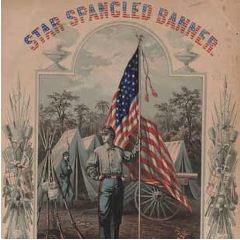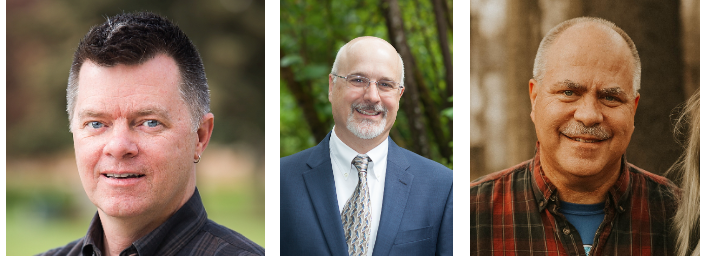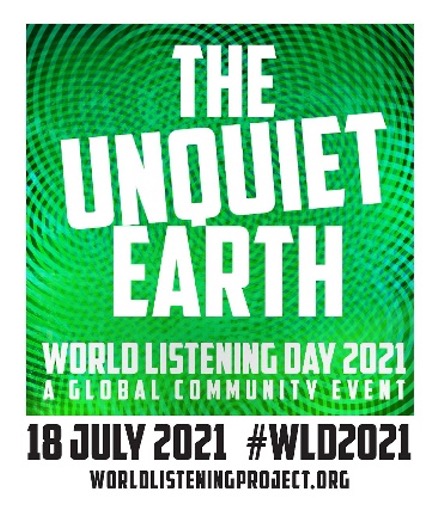|
|
Sound Postcard
Posted: July 7, 2021

This month we don’t have one audio file to recommend for you. Instead, we have over 27,000. That’s right, check out the United States Library of Congress collection of audio recordings, including sound research, performing arts, historical files, popular music and American folklife. We know you’ll find something new to discover and enjoy.
(Photo Credit: US Library of Congress, Patriotic Melodies Collection, loc.gov) |
|
Don’t Miss This Webinar - An Advantage of Your Membership
Posted June 9, 2021
Sign-up now for our CAOHC-NHCA Webinar, Impulsive Noise: Understanding, Measuring, and Assessing, presented by Don Finan, PhD., Greg Flamme, Ph.D., and William Murphy, B.S., M.S., M.Eng., Ph.D. on June 17, 2021 at 2 pm ET.
CEUs are available from AAA and ASHA for attendance of live programs. Previous webinars are available on-demand for home study. NHCA members pay a reduced rate. To learn more and register, click here.
 |
World Listening Day - July 18
Posted June 9, 2021

World Listening Day is July 18, 2021. The theme for 2021 “The Unquiet Earth” is an invitation to reflect on and engage with the constant sounds of earth, to remind ourselves that we share this mysterious and awesome planet. Listeners of all kinds are invited to host and participate in three activity types:
- 24-hour #WLD2021 streamed program hosted by the World Listening Project. Submit audio and video works by June 19, 2021.
- Local events that are self-organized and led by groups or individuals for the public. To promote and celebrate your activities on the WLD platforms, submit by July 17, 2021.
- Personal celebrations. Share private responses to the prompt of World Listening Day 2021: The Unquiet Earth.
For more information, click here. |
|
Hearing Research - Current Insights
Posted: June 9, 2021

In a study of mice, Johns Hopkins researchers have found a molecular “switch” that turns off the animal’s ability to repair damaged inner ear cells. The findings shed light on regenerative abilities that are observed in many species of birds and fish, but not mammals, including humans. Li, XJ and Doetzlhofer, A (2020). LIN28B/let-7 control the ability of neonatal murine auditory supporting cells to generate hair cells through mTOR signaling, Proceedings of the National Academy of Sciences, Sep 2020, 117 (36) 22225-22236; DOI: 10.1073/pnas.2000417117.
- Research led by Newcastle University has identified a ‘super-sensitized’ brain connection in people who suffer from an extreme reaction to triggering sounds such as chewing or loud breathing, often referred to as misophonia. They discovered increased connectivity in the brain between the auditory cortex and the motor control areas related to the face, mouth and throat. Kumar et al. (2021). The motor basis for misophonia, Journal of Neuroscience, 21 May 2021, JN-RM-0261-21; DOI: 10.1523/JNEUROSCI.0261-21.2021.
- Researchers from Brigham and Women’s Hospital analyzed data from nearly 144,000 women who were followed for up to 34 years. They found that risk of subsequent moderate or worse hearing loss was up to 40 percent higher in study participants with osteoporosis or low bone density. The study also found that taking bisphosphonates, the primary medication used to prevent fractures in people with reduced bone density did not alter the risk of hearing loss. Curhan SG et al. (2021). Osteoporosis, bisphosphonate use, and risk of moderate or worse hearing loss in women, Journal of the American Geriatric Society, 1-11; DOI: 10.1111/jgs.17275.
|
CAOHC Updates Position Paper on Emerging Technologies
Posted: June 9, 2021

The Council for Accreditation in Occupational Hearing Conservation (CAOHC) recently released a revised position statement on Emerging Technology and Science. This statement supersedes the original CAOHC position statement on Tablet Audiometry issued in April 2019.CAOHC believes regulators have a duty to revise policy and statutory requirements to reflect advances in technology and emerging scientific evidence about physical and chemical occupational hazards to hearing. In particular, CAOHC encourages Federal and state regulators, researchers, and standards entities to assess emerging audiometric technology performance and comment on their practical use in hearing conservation programs. For the full Position Statement, click here. |
|
|
|
|
<< first < Prev 21 22 23 24 25 26 27 28 29 30 Next > last >>
|
|
Page 28 of 48 |